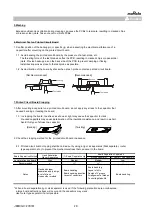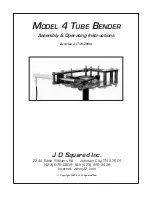
4-2.Flow Soldering
1. Do not apply flow soldering to chips not listed in Table 2.
[Standard Conditions for Flow Soldering]
Table 2
2. When sudden heat is applied to the components, the
mechanical strength of the components will decrease
because a sudden temperature change causes
deformation inside the components. In order to prevent
mechanical damage to the components, preheating is
required for both of the components and the PCB.
Preheating conditions are shown in table 2. It is required to
[Allowable Flow Soldering Temperature and Time]
keep the temperature differential between the solder and
the components surface (ΔT) as low as possible.
3. Excessively long soldering time or high soldering
temperature can result in leaching of the outer electrodes,
causing poor adhesion or a reduction in capacitance value
due to loss of contact between the electrodes and end termination.
4. When components are immersed in solvent after mounting,
be sure to maintain the temperature differential (ΔT)
between the component and solvent within the range
shown in the table 2.
In the case of repeated soldering, the accumulated
soldering time must be within the range shown above.
Recommended Conditions
Lead Free Solder: Sn-3.0Ag-0.5Cu
5. Optimum Solder Amount for Flow Soldering
5-1. The top of the solder fillet should be lower than the
thickness of components. If the solder amount is
excessive, the risk of cracking is higher during
board bending or any other stressful condition.
Atmosphere
100 to 120
℃
250 to 260
℃
Air
Part Number
GRM18/21/31
Temperature Differential
ΔT
≦
150
℃
Caution
Lead Free Solder
Preheating Peak Temperature
Soldering Peak Temperature
!
S
o
ld
e
rin
g
m
p
e
ra
tu
re
(
℃
)
Soldering Time(s)
280
270
260
250
240
230
220
0
10
20
40
30
Temperature(
℃
)
Soldering
Peak
Temperature
Preheating
Peak
Temperature
30-90 seconds
Preheating
5 seconds max.
Time
Gradual
Cooling
Soldering
Δ
T
Up to Chip Thickness
Adhesive
in section
JEMCGC-2701W
18












































